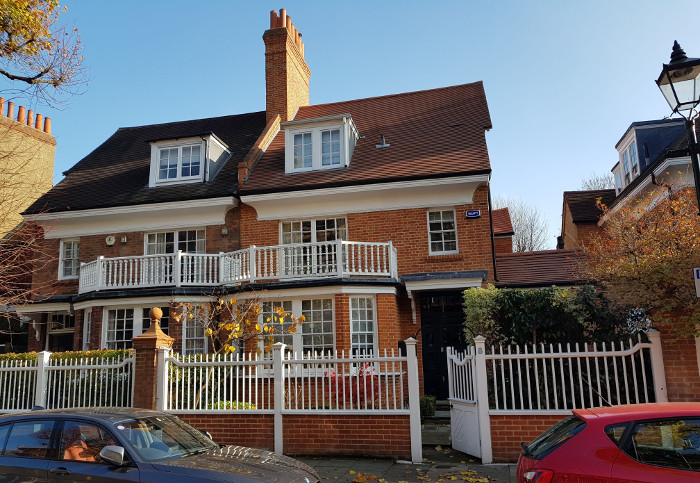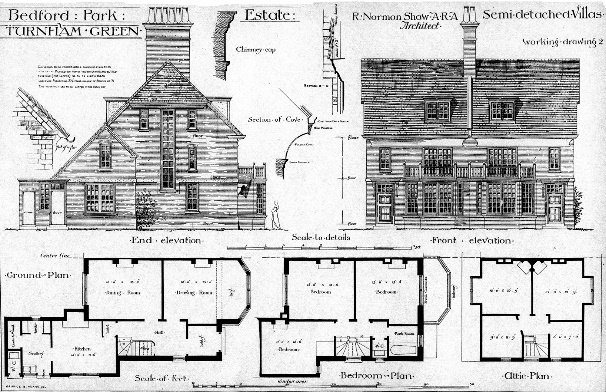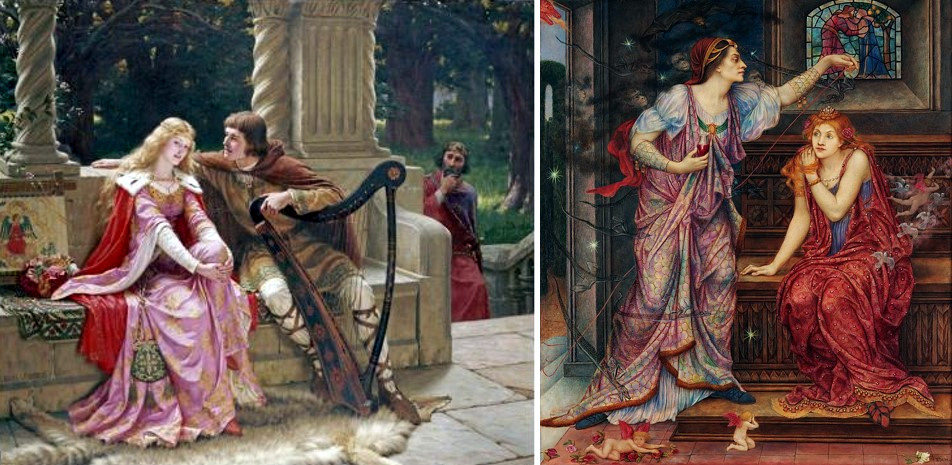No.8 Woodstock Road: Yeats family home, 1879-1881
Location 6


Bedford Park was a place of wonder to a thirteen-year-old WB Yeats. Having lived at various London addresses, the family were living in a steep attic-and-basement Kensington house, when his father mentioned the new village Jonathan Carr was having built in Chiswick, houses with gardens and no basements, but still within reach of Godolphin in Hammersmith, then a boy’s school, which the young Yeats was attending. So Yeats had the pleasure of living in one of the first houses completed in what was almost open country beside the railway. Including the pleasure of playing among the ladders and foundations of houses still being built.
The idea of an authentic village appealed: The streets were not straight and dull as at North End, Yeats writes, but wound about where there was a big tree or for the mere pleasure of winding, and there were wood palings instead of iron railings.
More interesting still were the people: We went to live in a house like those we had seen in pictures and even met people dressed like people in the storybooks. That comment of Yeats’s tells us that Bedford Park people took the Aesthetic Movement seriously, even though it was much satirised.
In fact the “village” had been built in Queen-Anne style which was less traditional English village and closer in some ways to a Dutch style of architecture which had been imported after England’s campaign in the War of the Spanish Succession.
But alongside the Arts-&-Crafts movement’s idea of a return to the use of traditional decorative skills, Bedford Park life, and art, was very much influenced by the mediaeval themes in paintings by the Pre-Raphaelite Brotherhood.
And in mediaeval terms Yeats sees himself, in an early poem, as a jester, someone whose talent is to amuse a queen, but who cannot win her love by his wit, just as the poet finds he cannot win a lover by his words, however wise-tongued his soul or sweet-tongued his heart. Maybe it’s only by sacrificing his art, by giving up his poetry, that he will conquer?
